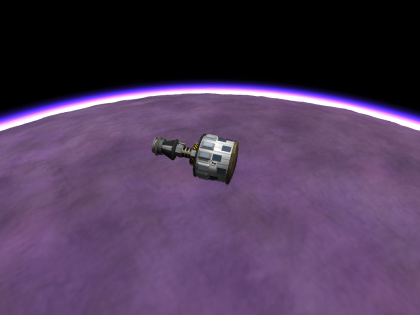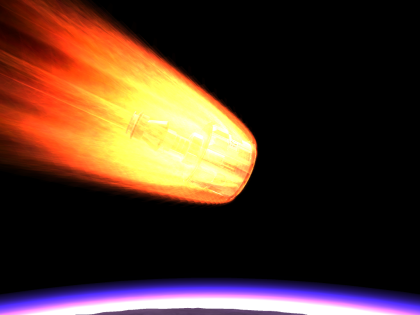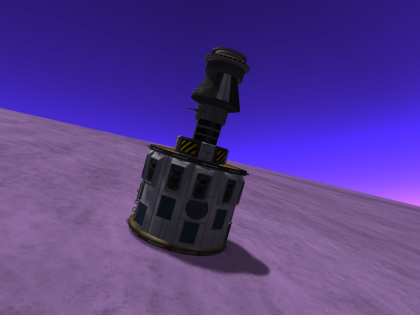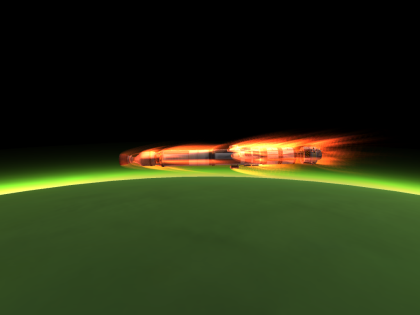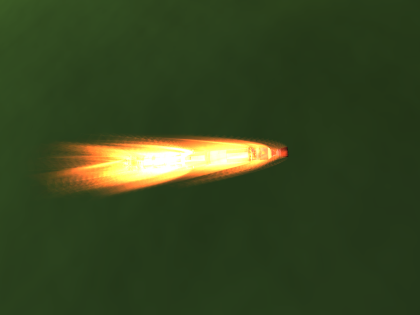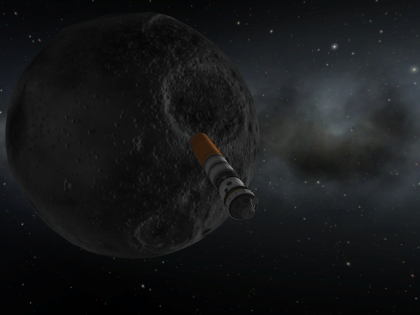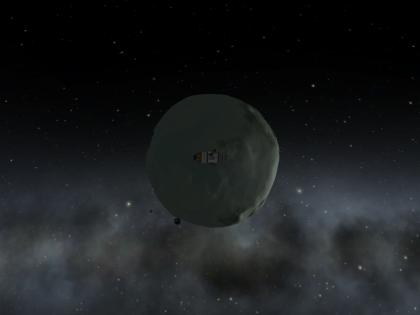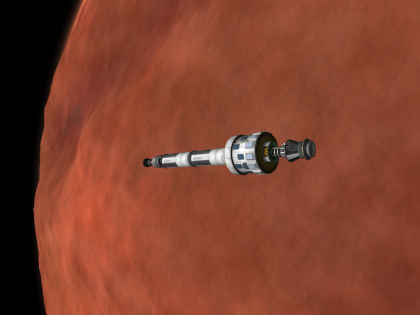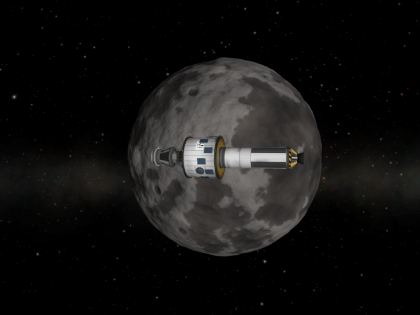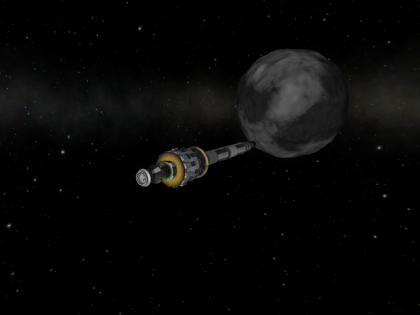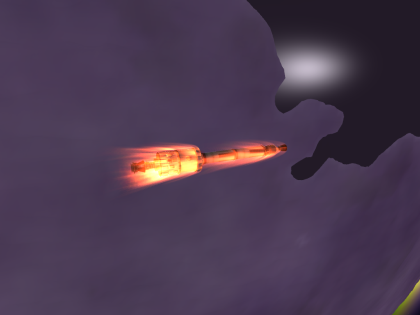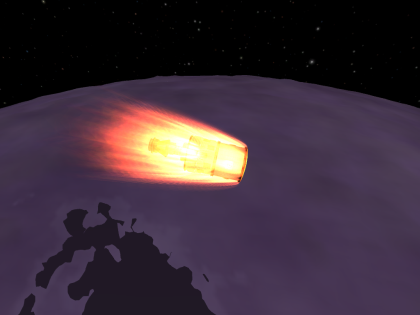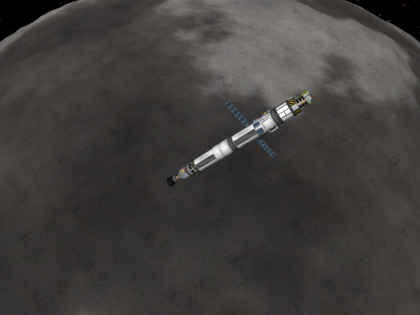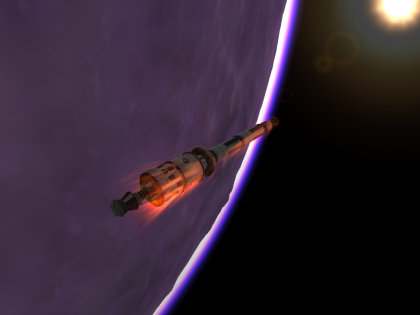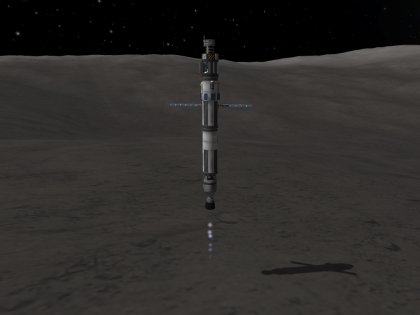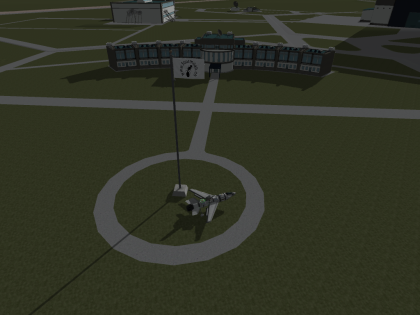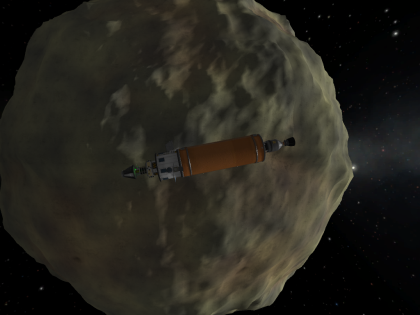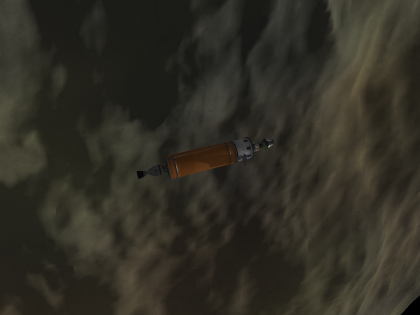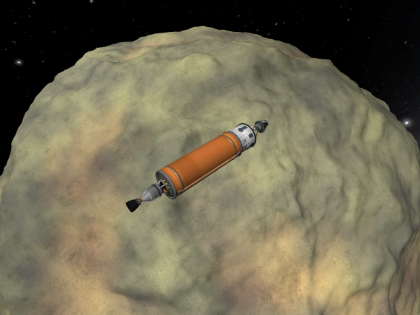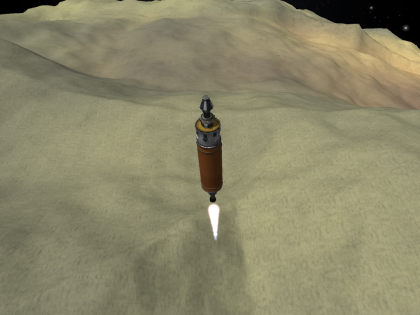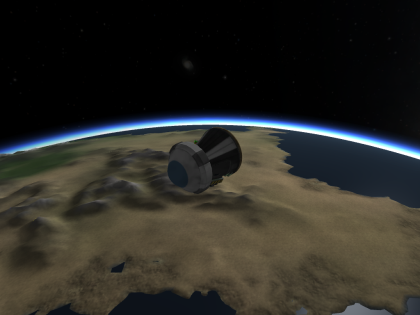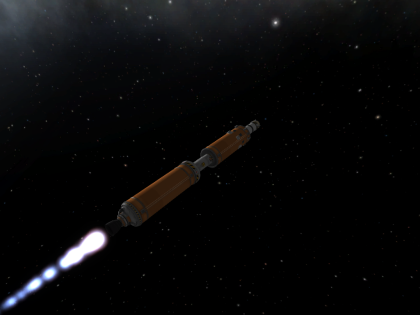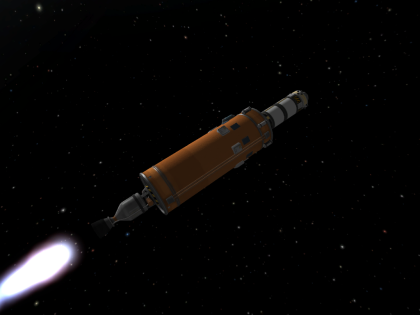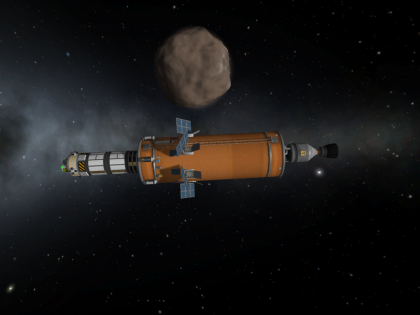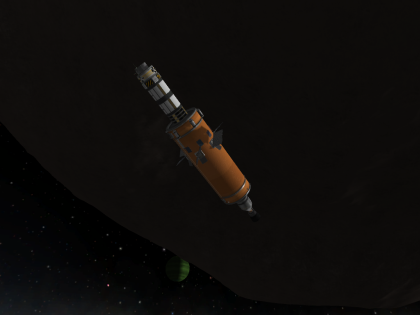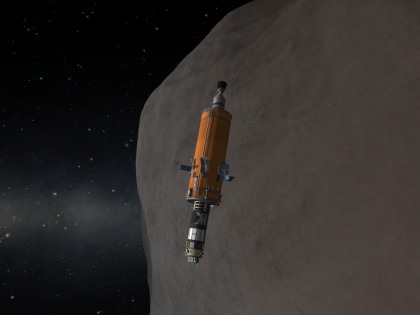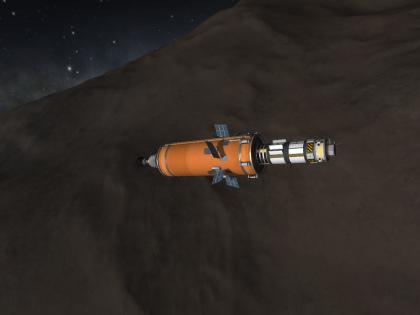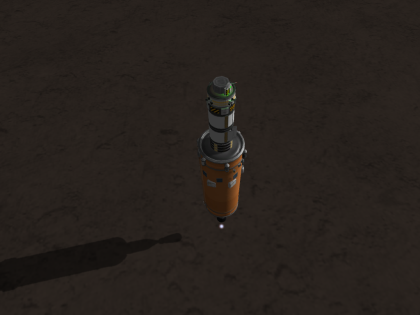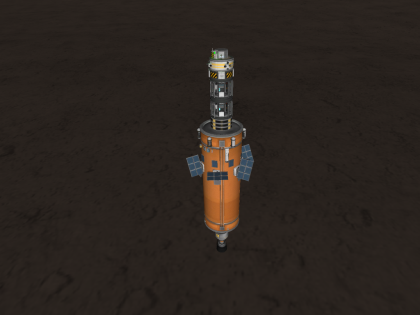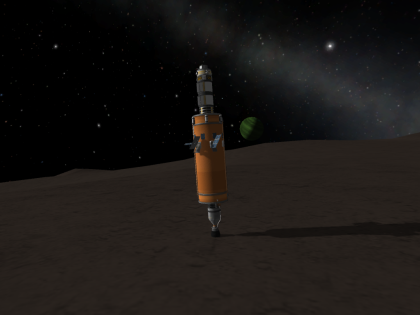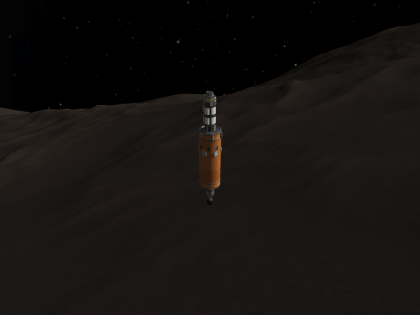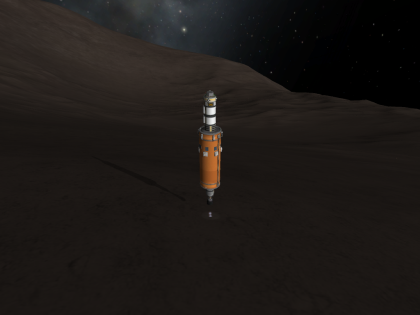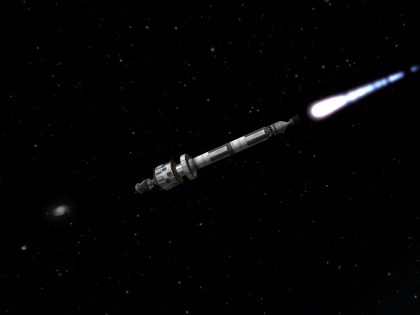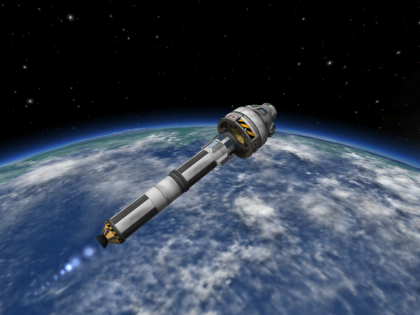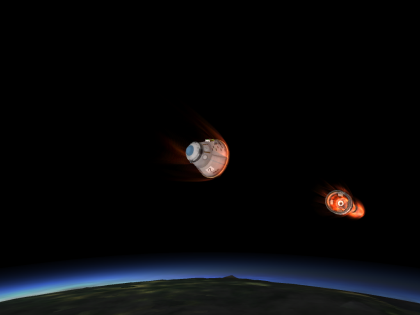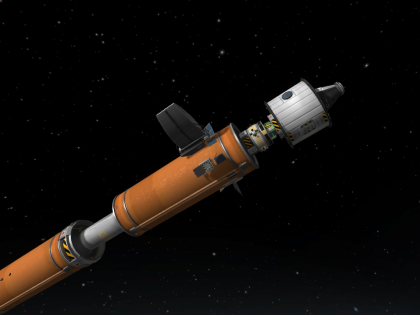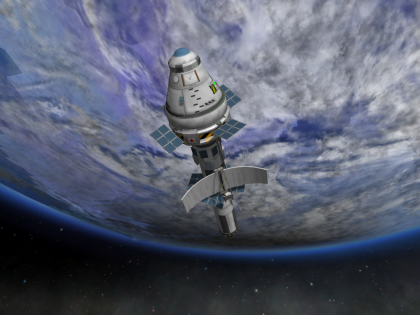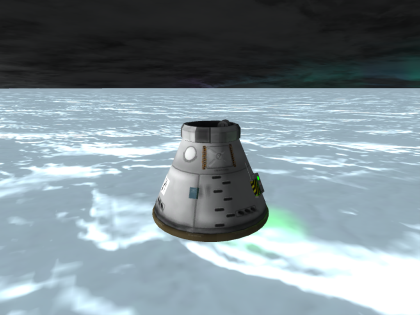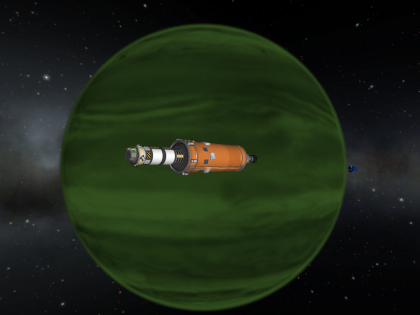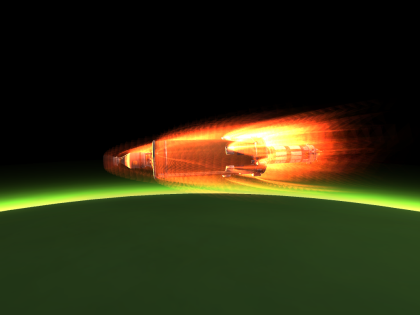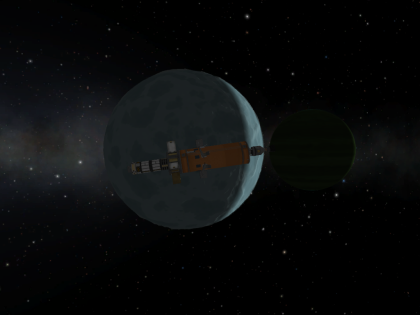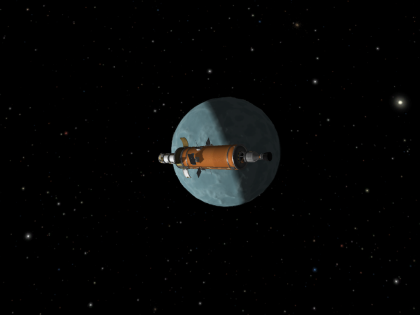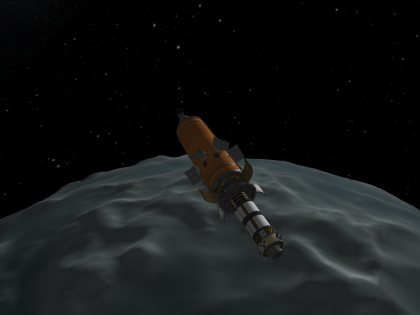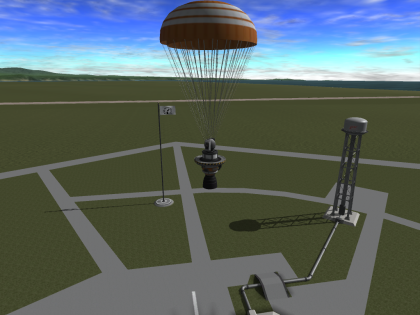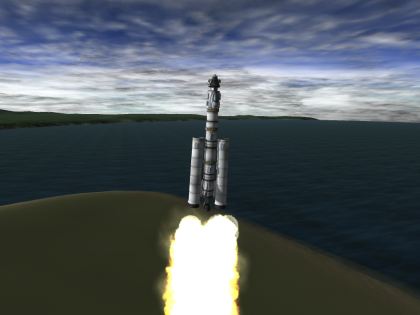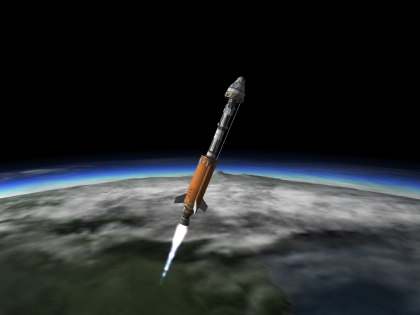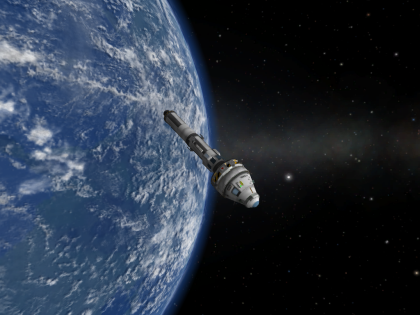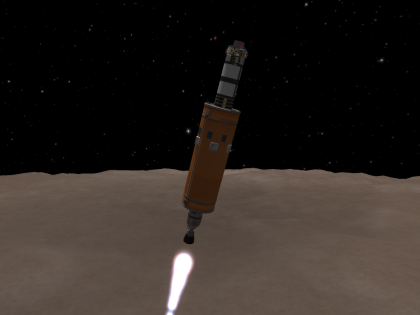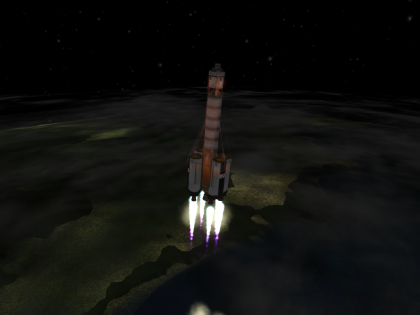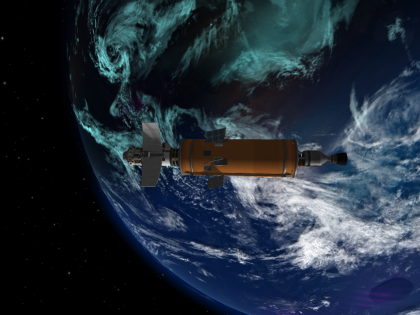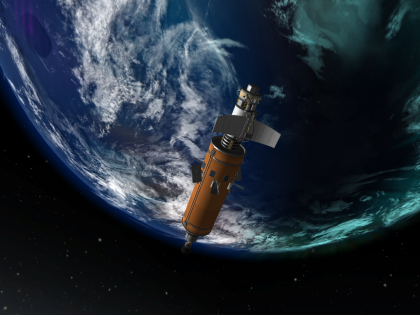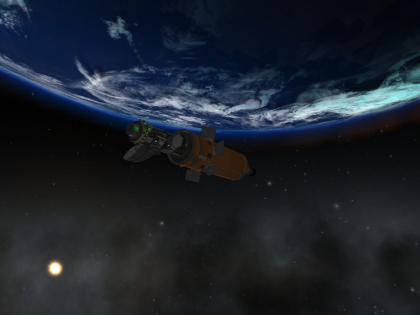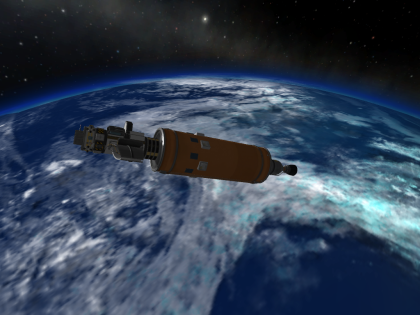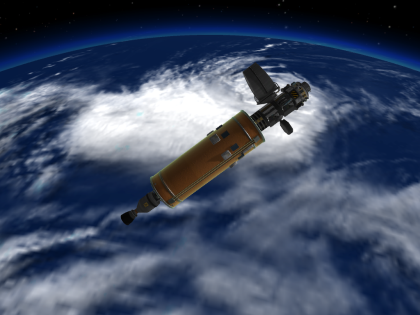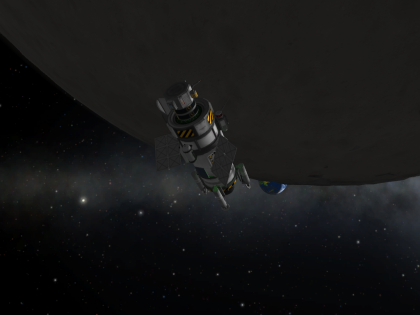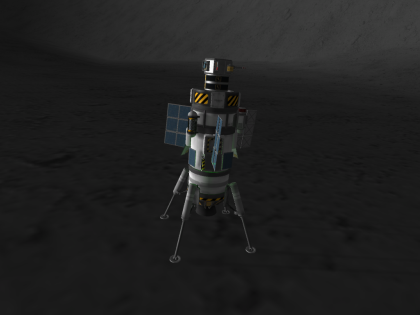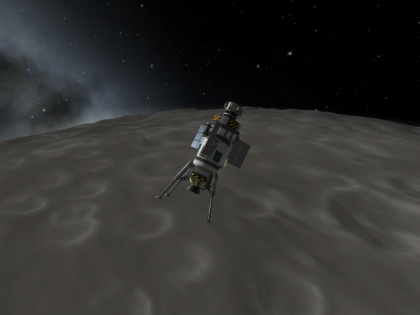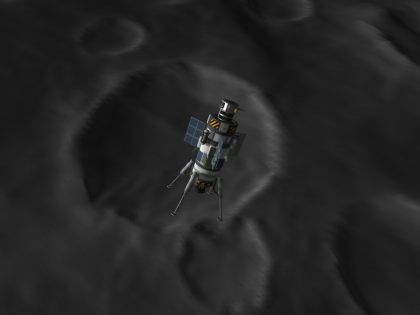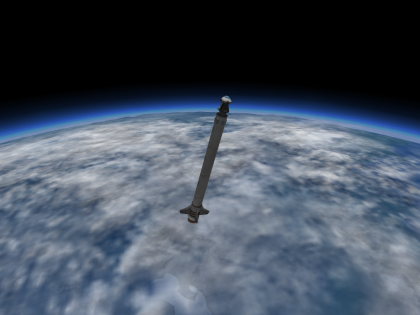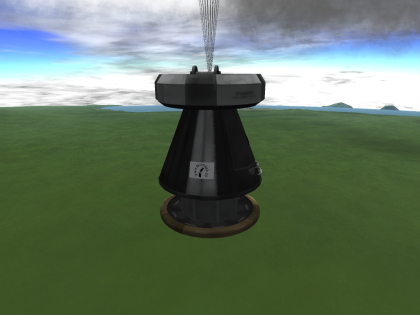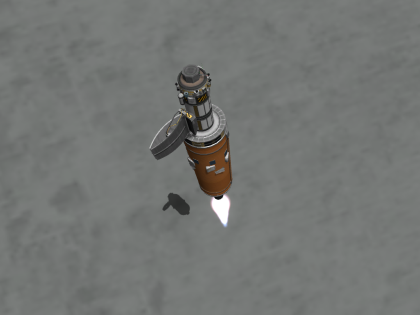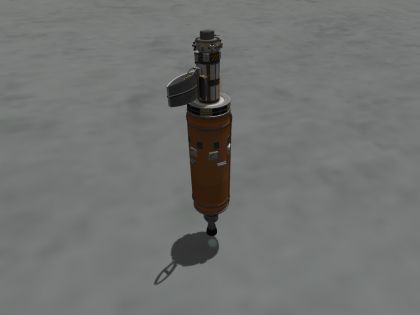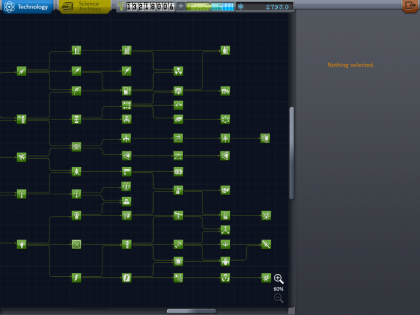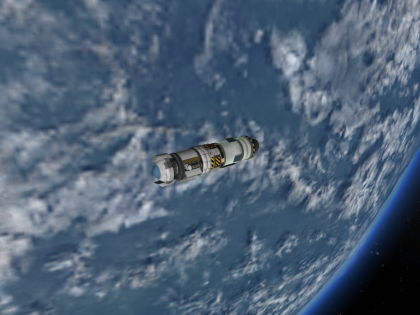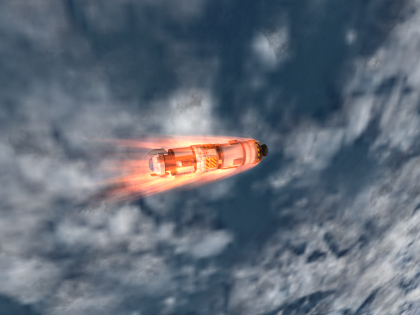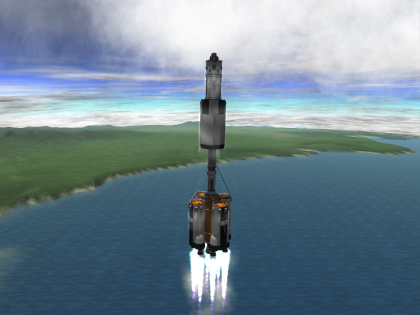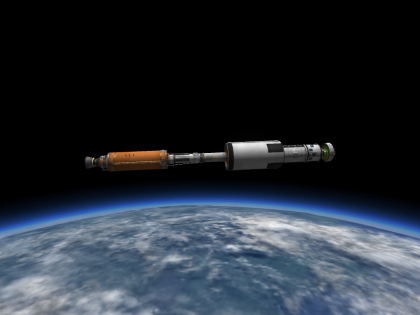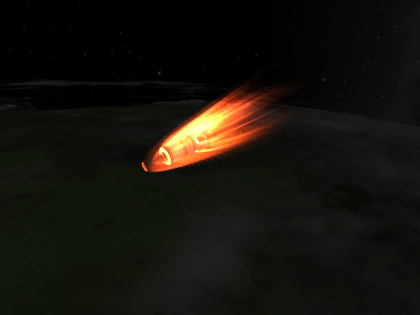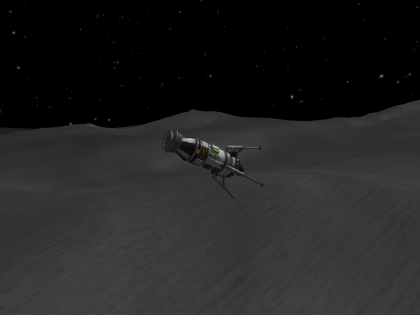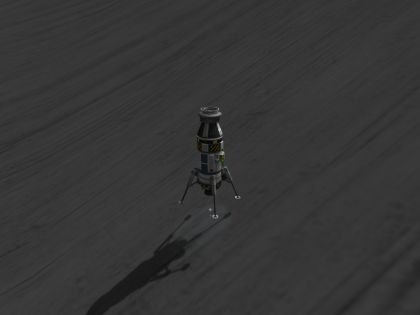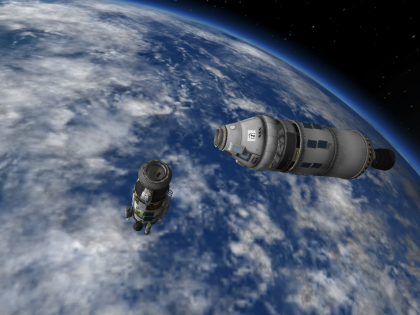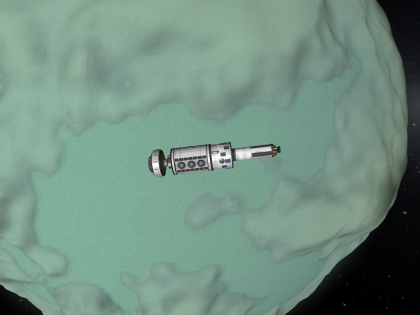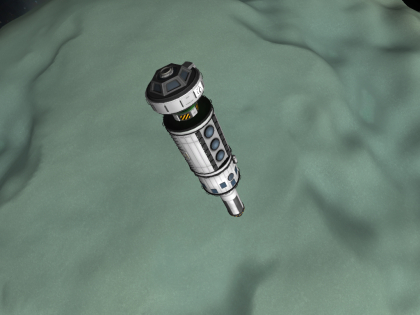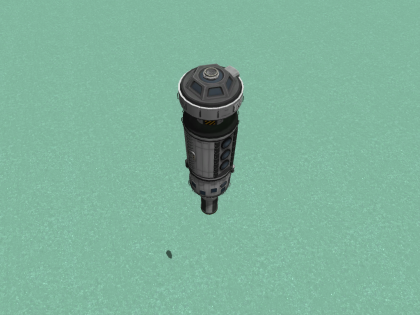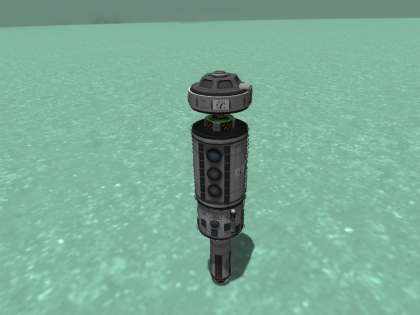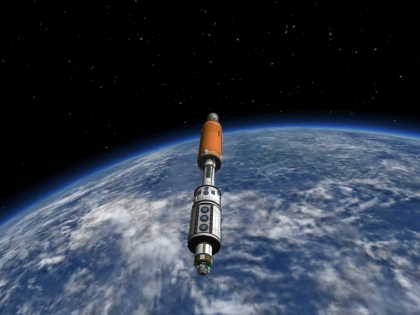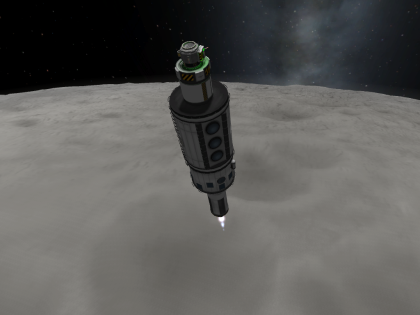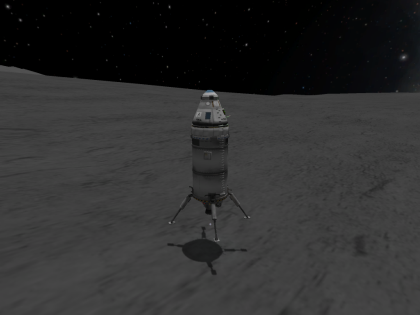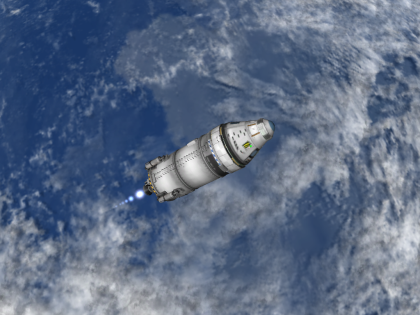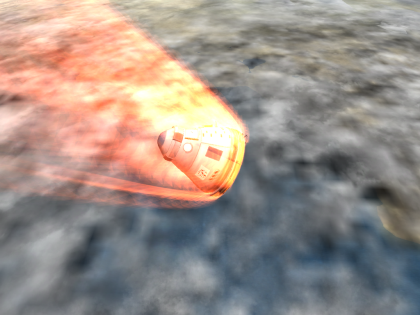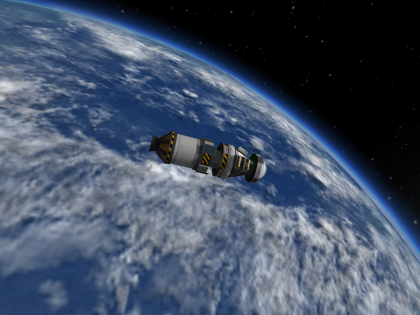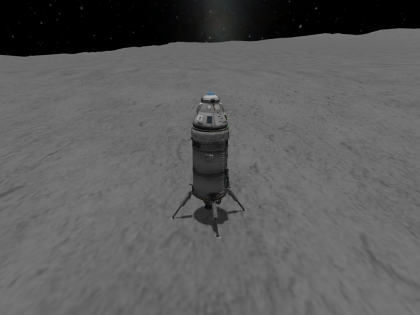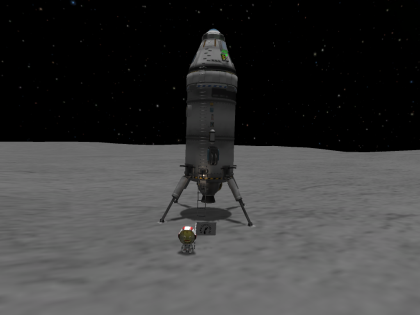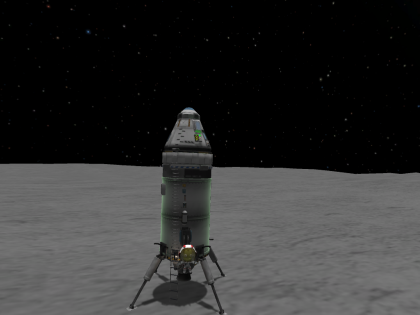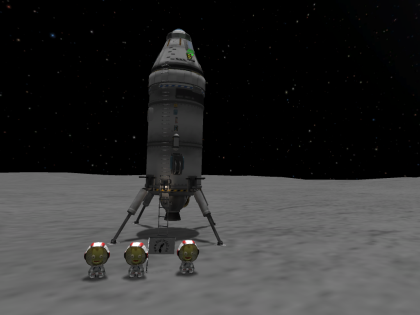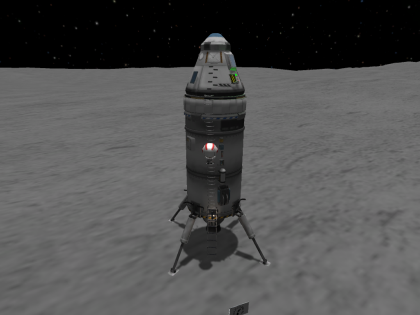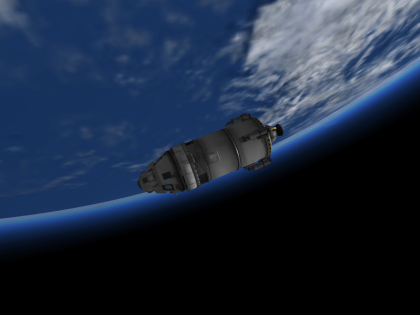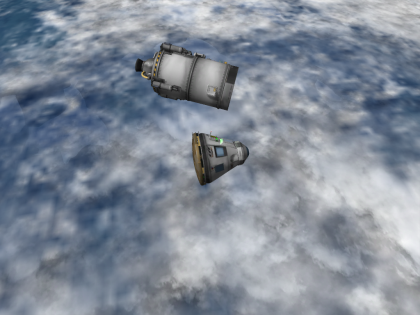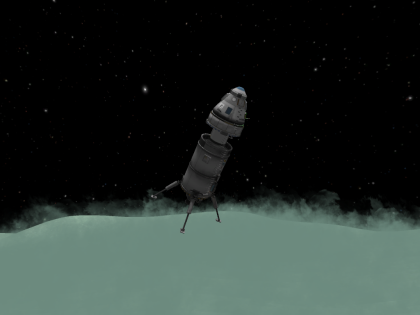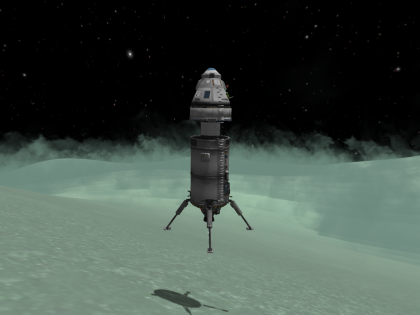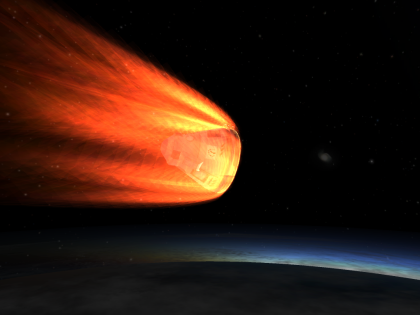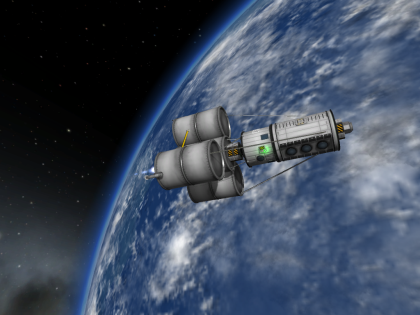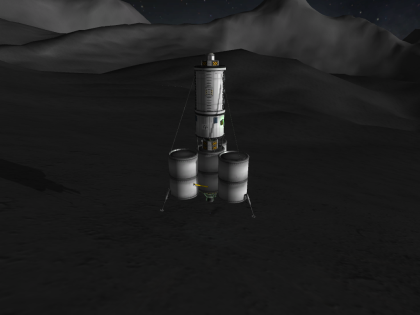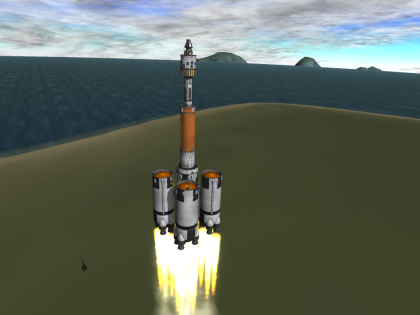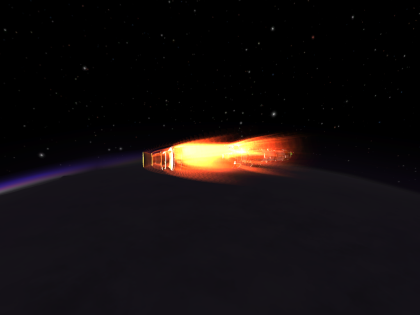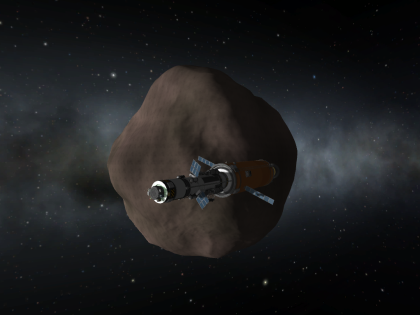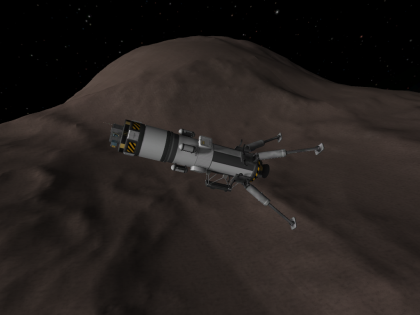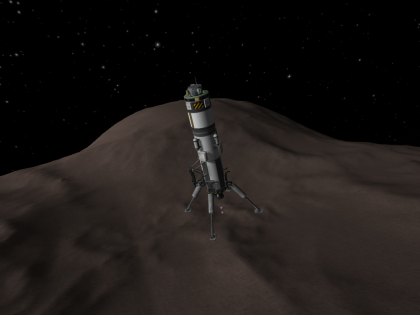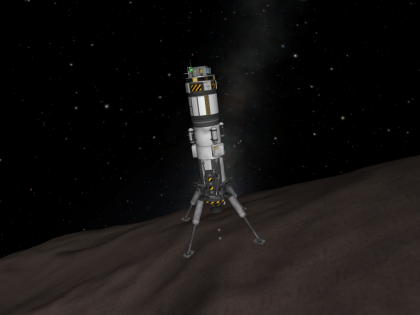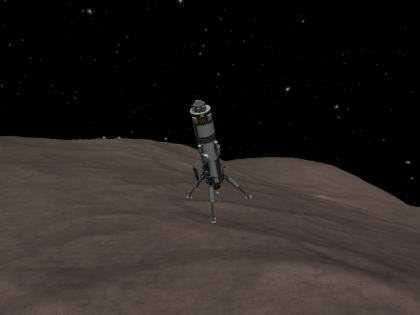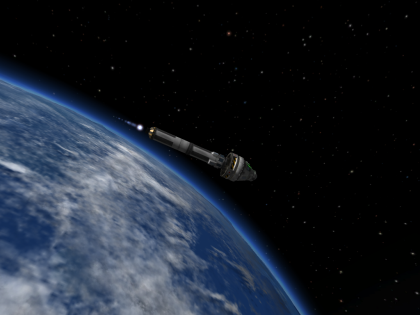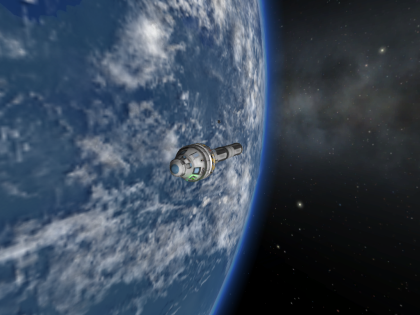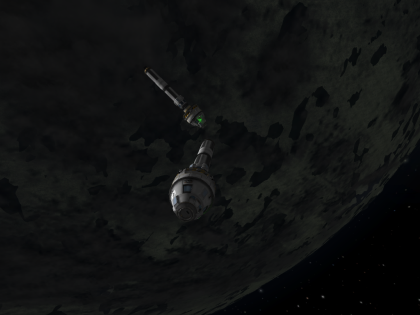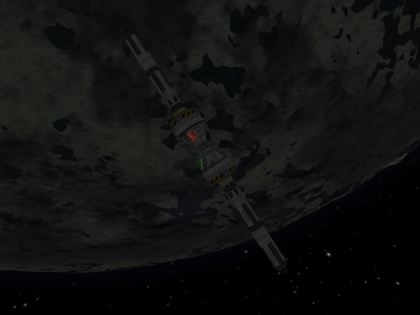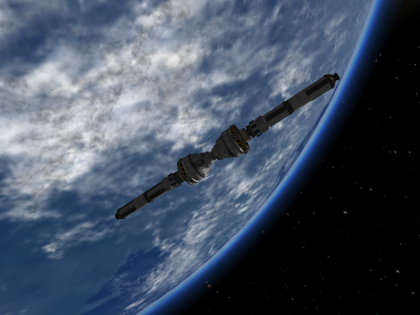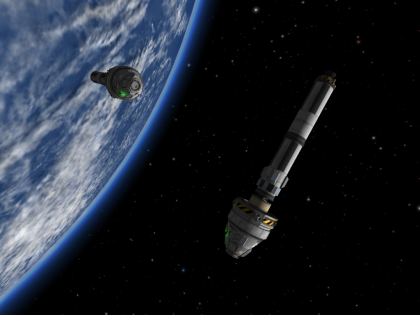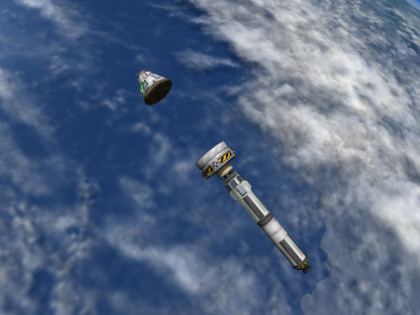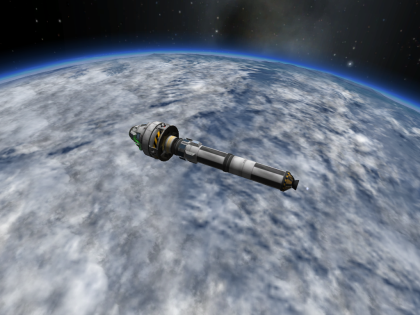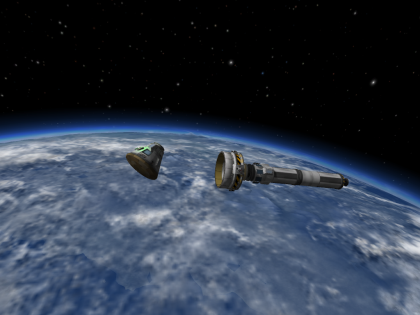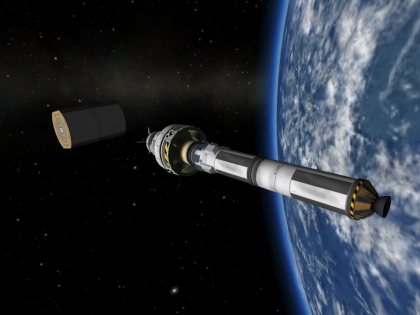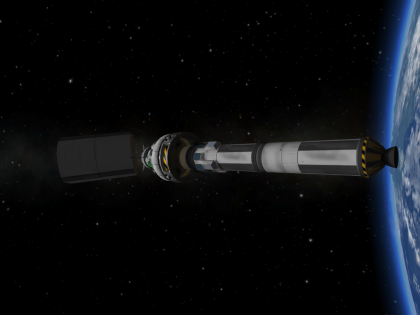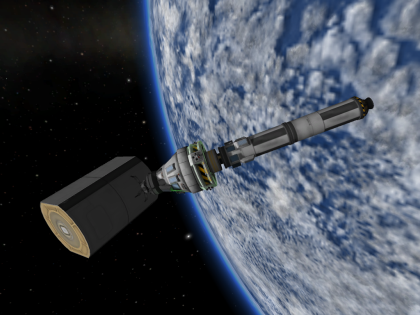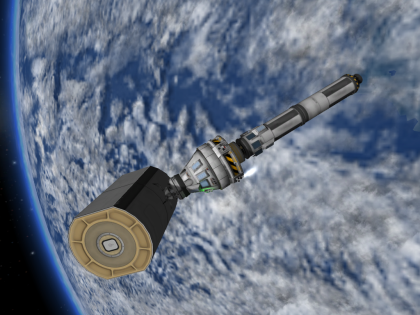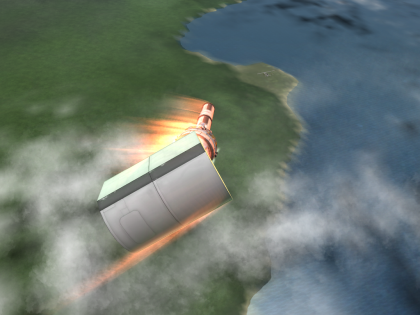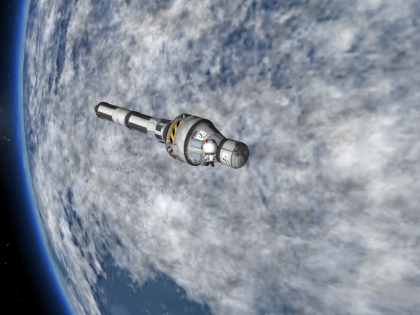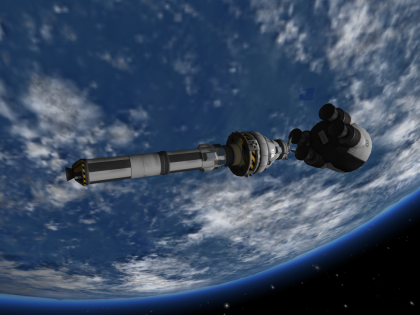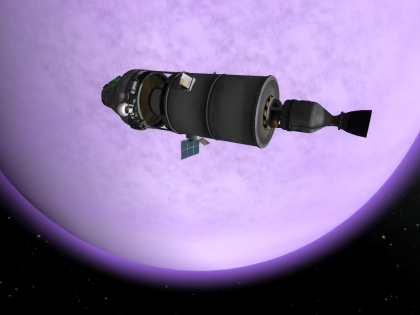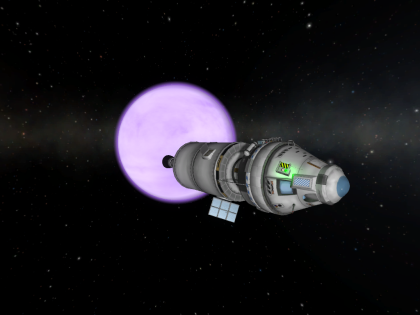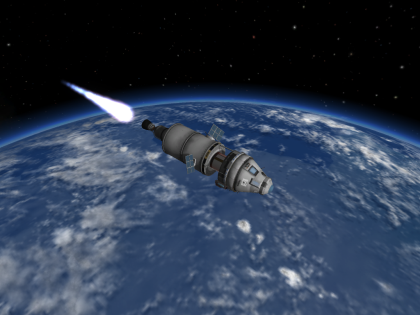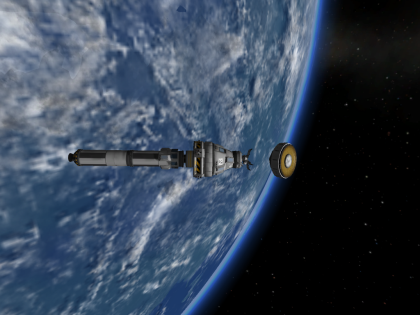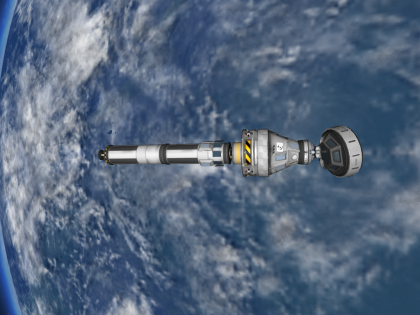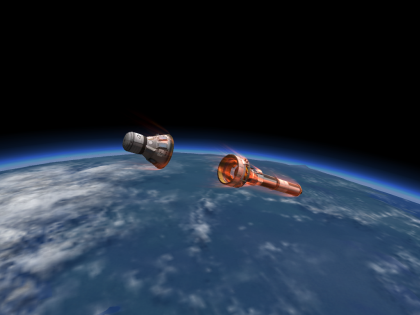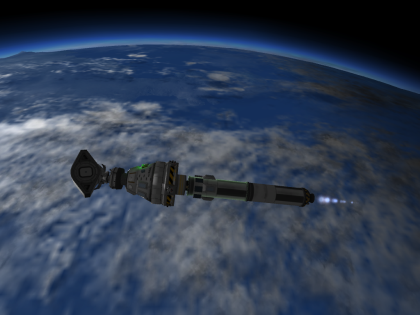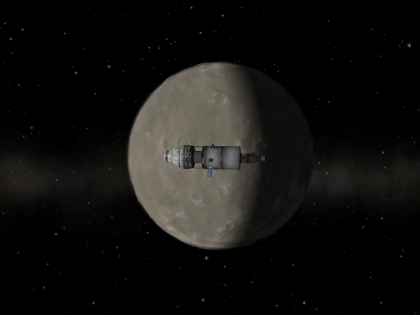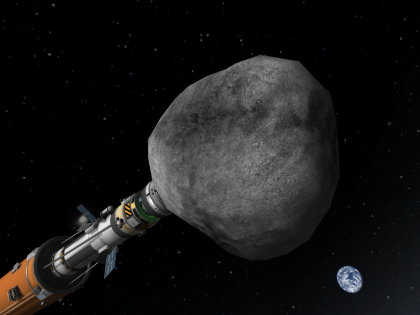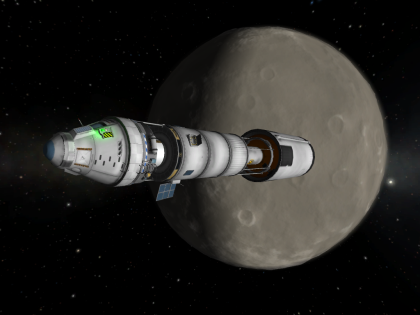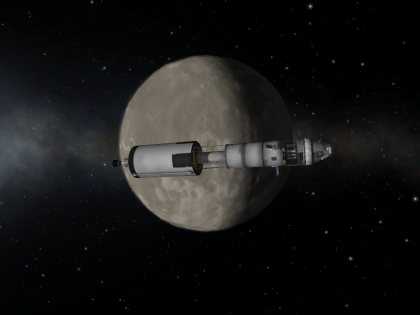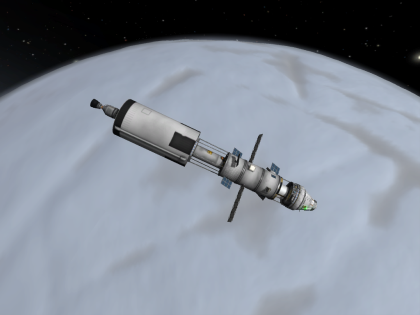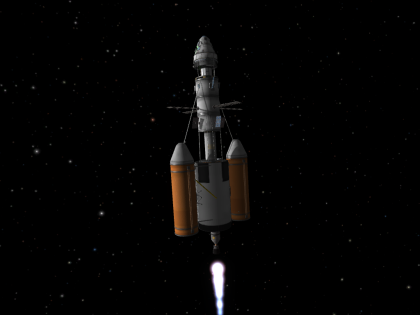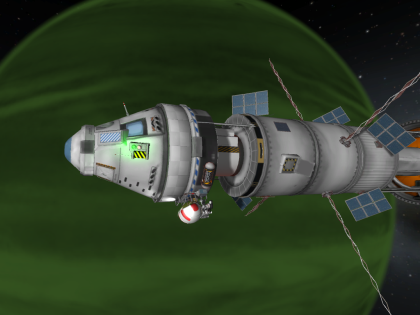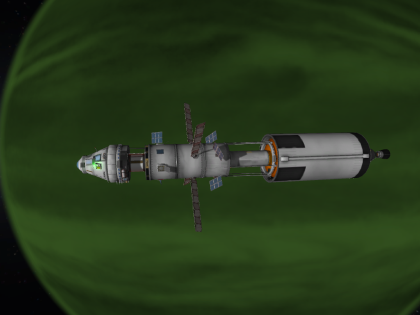
|
Kerbal Space Program Screenshot Gallery
|

|
Kerbal
Space Program is a computer game in which the player can build spacecraft,
aircraft, and spaceplanes to their own design and use them on missions,
both robotic and with crews, to explore the planetary system of the
star
Kerbol.
The space program is conducted on behalf of the
Kerbals,
inhabitants of planet
Kerbin,
and the player manages the space program,
advancing in technological capability, ambitiousness of missions, and
size and skill of the kerbonaut corps.
Unlike many games, there is neither a well-defined path through the
game nor a goal at which point the player has “won”. Just
as in a real-world space program, it's up to the player to decide
whether to focus on robotic exploration, crewed missions, solid or
liquid propulsion, rockets or air breathing engines, and expendable or
reusuable launch hardware. The game can be played in a
“sandbox”
mode where all of the technology is available to the player from the start,
in an intermediate
“science”
mode where completing
scientific goals unlocks technologies, or in
“career” mode
where the player undertakes contracts to perform specific research and
development tasks, such as testing an engine in flight or returning a
surface sample from another world. In career mode the player earns
funds, reputation, and science points as goals are achieved, and these
can be spent to advance through the game by obtaining access to new
technologies, upgrading facilities, and recruiting additional crew.
There is no ultimate goal in the game. When the player has unlocked
all of the available technologies, visited every body in the Kerbol system,
and collected all of the available science (which will take a long
time), there are a multitude of other amusing things that can be done
building upon a physics engine which is, within the somewhat odd universe
it models, remarkably faithful. You can try building monster rockets for
direct ascent missions to distant planets, explore innovative mission modes
such as propellant depots, in-situ propellant production, flying probes in
bodies with atmospheres, assemble complex space stations or interplanetary
vessels with multiple launches, or just about anything that pops into your
mind.
One thing which is certain is that after you've spent some time with
Kerbal Space Program you will develop an intuition about orbital
mechanics which few people, even authors of “hard”
science fiction, have. Here is how
Randall
Munroe, creator of
xkcd, described it.
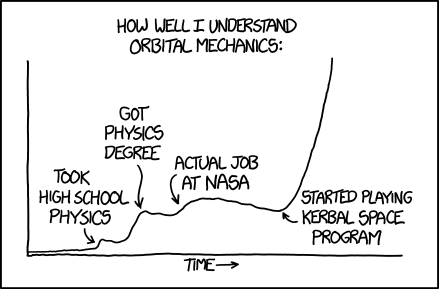
In addition to the base game, there are numerous modification and extension
packs available from third parties, almost all free. Some improve the
game play and aesthetics of the game, while others add new parts and
capabilities. Since these are third party packages, the quality is not
uniform, and some may cause the game to malfunction or crash. As long
as you stick to widely-used add-ons and read the comments before installing
them you'll probably be all right. I am presently using the following
add-ons.
Some Kerbal Space Program purists will decry my use of MechJeb (an autopilot), believing that
real players do everything manually. Well, they can believe anything they wish, and I
couldn't care less what they think of me, but I'd observe that since the dawn of the space
age every space mission, unmanned or manned, has used some degree of automation, and
that MechJeb provides only a rudimentary level of automation compared to that used
routinely for the last several decades in mission planning and operations. Besides,
what interests me about the game is mission planning, design of craft, and operations,
not trying to find optimal
Hohmann transfers
by hand, which is something nobody has ever
done in any space mission.
I originally began experimenting with the game on an early pre-release version in
sandbox mode (which was all that was available at the time). When the 0.90 beta
release became available, I started a new career game from scratch and have
continued it onto subsequent releases without difficulty, up to the current
1.0.4 as of this writing. I decided to initially concentrate on robotic
exploration, and visited every body in the Kerbol system with robotic probes
fulfilling contracts, often using excess delta-v to obtain additional science
by collecting and transmitting data. I was able to eventually unlock the
entire technology tree and completely upgrade all of the facilities of the Kerbal
Space Centre from this program, so in a sense I “won”. I then took
on rescue missions, which not only allow one to hone one's rendezvous and EVA skills,
but also, with every mission, increase the size of the kerbonaut corps and
get paid for it (hiring new kerbals is expensive).
It has all been tremendous fun, and while the physics of Kerbal Space Program are
not that of the real world, most of what you'll learn about orbital mechanics and
rocket design is directly applicable to our universe. If you're interested in such
matters, get yourself a copy of
Kerbal Space Program
(it's available for Linux, Macintosh, and Windows) and dive in yourself. It can be
very frustrating getting started, as there is a great deal of “lore”
which is not explained by the game itself. The best way to start is to view the
career mode tutorials
published by Scott Manley on YouTube, and by referring to the
Kerbal Space Program Wiki,
which you will find yourself consulting frequently while playing the game.
I'm not going to attempt to provide detailed information or play-throughs; others have
done that much better than I possibly could. The game allows you to make screen
shots. The following is a collection I've accumulated while exploring the Kerbol
system. I'll add to these as the adventure continues.
Bookmark
/images/kerbal/last.html
to display the most recent pictures.
Click images to enlarge.
This document and all images included within it are in the public domain.
They may be used in any manner without permission, restriction, attribution,
or compensation.






